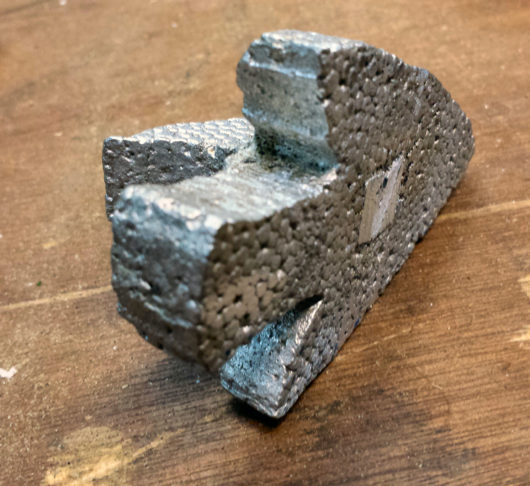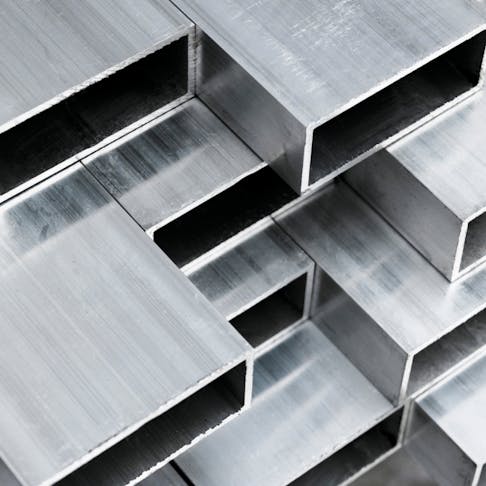A Comprehensive Overview to Aluminum Casting: Methods, Uses, and Industry Insights
Aluminum casting is a vital procedure with diverse applications across several sectors. This overview checks out different casting methods, consisting of sand, pass away, and financial investment casting. Each approach has distinctive advantages, adding to aluminum's track record for corrosion-resistant and light-weight components. Recognizing these methods is important for makers aiming to utilize aluminum's residential or commercial properties. The landscape is swiftly evolving. The impact of current patterns on future practices warrants better expedition.
Understanding Aluminum: Characteristics and Advantages
Aluminum, a flexible steel, is widely acknowledged for its distinct properties that make it an excellent choice for numerous applications. It is lightweight yet solid, offering a superb strength-to-weight ratio that is especially advantageous in markets such as aerospace and automobile. In addition, aluminum exhibits extraordinary rust resistance because of the formation of a protective oxide layer, which boosts its durability and durability.
The steel is additionally very flexible, enabling simple shaping and fabrication, which adds to its widespread use in production. Aluminum is an excellent conductor of electricity and warmth, making it useful in electrical and thermal applications. Its recyclability includes in its allure, advertising sustainability in producing procedures. The combination of these residential or commercial properties not only enhances efficiency yet additionally lowers power usage throughout its lifecycle, placing aluminum as a vital product in contemporary engineering and design.
Summary of Aluminum Casting Techniques

Sand Casting Methods
Among various aluminum casting methods, sand casting sticks out as one of the most widely made use of techniques due to its adaptability and cost-effectiveness. This method entails creating a mold and mildew from sand, which can be easily shaped to create complicated geometries. The process begins with packing sand around a pattern, usually made from metal or plastic, to develop a dental caries that defines the last shape. As soon as the mold is prepared, liquified aluminum is put right into the tooth cavity, permitting it to strengthen and cool down. Afterward, the sand is gotten rid of, disclosing the cast component. Sand casting is specifically preferred for generating large elements and small manufacturing runs, making it an important technique in numerous sectors, consisting of automotive and aerospace. Its adaptability to various styles improves its appeal.
Die Casting Processes
Die casting procedures stand for an extremely efficient method for producing intricate aluminum get rid of exceptional dimensional precision and surface finish. This technique includes forcing liquified aluminum right into a mold under high pressure, ensuring that even one of the most complex geometries can be accomplished. There are two key kinds of die casting: warm chamber and chilly chamber. Hot chamber pass away casting appropriates for steels with low melting factors, while chilly chamber die casting is favored for aluminum due to its greater melting factor. Both approaches help with rapid production and can accommodate high quantities, making them excellent for industries such as auto and electronics. Efficient die casting requires precise temperature control and careful mold style to stop problems and assure top quality.
Sand Casting: A Standard Approach
Although contemporary casting techniques have arised, sand casting stays a fundamental technique in the aluminum market because of its versatility and cost-effectiveness. This conventional strategy entails creating a mold from a blend of sand and a binding representative, permitting for the production of intricate sizes and shapes. Sand casting is especially helpful for low to tool manufacturing volumes, as it lessens configuration prices and time.
The process starts with the development of a pattern, which is after that positioned in the sand to develop a tooth cavity. Once the mold is ready, liquified aluminum is gathered, loading the dental caries and taking the shape of the pattern. After cooling down, the sand is removed, disclosing the completed actors part.
Sand casting is extensively made use of for generating automotive elements, equipment parts, and artistic sculptures, highlighting its enduring significance in different industries of the aluminum industry. (Aluminum Casting Company)
Die Casting: Precision and Efficiency
Die casting is a procedure that uses impressive precision and effectiveness in aluminum production. This approach is extensively made use of across different industries because of its capability to produce complicated forms with limited resistances. It also provides one-of-a-kind obstacles that require cutting-edge services to ensure optimal results.
Process Overview and Conveniences
When considering aluminum casting approaches, pass away casting attracts attention for its precision and performance. This process involves compeling liquified aluminum into a mold and mildew under high stress, which permits tight tolerances and complex styles. The rapid cooling of the steel warranties quick solidification, resulting in top quality components with marginal surface area blemishes. Furthermore, die casting deals superb repeatability, making it suitable for large manufacturing runs. The usage of multiple-use molds considerably decreases material waste and manufacturing time, adding to cost-effectiveness. The toughness and resilience of die-cast aluminum components make them favorable for requiring applications. In general, pass away casting combines progressed modern technology with useful benefits, placing it as a leading selection in aluminum casting strategies.
Applications in Numerous Industries
The convenience of die casting allows its application across a large range of markets, showcasing its accuracy and efficiency. In the automotive sector, die casting produces detailed elements such as engine blocks and transmission real estates, adding to weight decrease and improved efficiency. The electronics sector advantages from read the article die casting by creating durable and light-weight housings for numerous tools, enhancing both performance and visual appeals. In the aerospace field, this strategy supplies high-strength components that endure severe conditions while preserving low weight. Furthermore, consumer products makers use die casting for creating components that call for complicated geometries and tight tolerances. Overall, die casting plays a vital function ahead of time technology and product style across multiple markets, highlighting its importance in contemporary manufacturing.
Obstacles and Solutions
Many challenges emerge in the die casting process that can affect both precision and efficiency. One considerable issue is the occurrence of issues such as porosity, which can endanger the honesty of the end product. Furthermore, preserving accurate temperature control is necessary, as variants can result in inconsistent material residential or Full Report commercial properties. Tool wear and tear also existing difficulties, typically causing increased production costs and downtime. To alleviate these concerns, producers make use of innovative simulation software program to predict prospective troubles before manufacturing begins. Carrying out regular maintenance schedules for equipment and tools likewise aids maintain effectiveness. Moreover, buying top quality materials and utilizing competent professionals can enhance total procedure integrity, making sure that high requirements of accuracy are constantly met.
Investment Casting: Detail and Intricacy
Although financial investment casting is usually associated with high accuracy and complex styles, its true stamina hinges on the capability to produce complex geometries that would certainly be challenging to accomplish via various other manufacturing processes. This strategy uses a wax pattern, which is coated with a refractory product to produce a mold and mildew. Once the mold is developed, the wax is dissolved, leaving a cavity that perfectly reproduces the original pattern.

Applications of Aluminum Castings Across Industries
Investment casting's capacity for creating complex aluminum elements has made it an important strategy throughout various sectors. In the automotive market, aluminum castings are utilized for engine blocks, transmission housings, and suspension components, contributing to weight reduction and enhanced fuel effectiveness. The aerospace sector benefits from aluminum spreadings in airplane frames, wind turbine housings, and touchdown gear, where strength-to-weight proportion is essential. aluminum casting. In addition, the electronic devices field utilizes aluminum castings for warmth enclosures and sinks, ensuring effective thermal management and toughness. In the construction sector, aluminum castings are made use of for architectural elements, window frames, and structural parts, using rust resistance and visual charm. The aquatic sector includes aluminum spreadings in boat engines and fittings due to their light-weight and resistance to salt water deterioration. Overall, aluminum spreadings demonstrate flexibility and performance, making them crucial in diverse applications throughout countless areas
Present Trends and Future Instructions in Aluminum Casting
Recent innovations in aluminum casting innovation are shaping the future of making throughout numerous markets. One remarkable trend is the boosting fostering of additive production methods, which enable more facility geometries and reduced product waste. In addition, the combination of automation and robotics simplifies manufacturing processes, improving efficiency and accuracy.
Sustainability is likewise a driving force, with producers focusing on reusing aluminum and reducing energy usage throughout the casting procedure. This change not only reduces environmental influence yet also reduces operational costs.
Innovations in simulation software program allow better style and optimization of casting procedures, resulting in higher top quality products with fewer defects. As industries proceed to accept these technologies, the demand for high-performance and light-weight aluminum elements is expected to rise, better strengthening aluminum casting's role in the future of manufacturing. On the whole, these patterns highlight a commitment to effectiveness, sustainability, and technological advancement in the aluminum casting market.
Regularly Asked Questions
What Are the Environmental Influences of Aluminum Casting Processes?

How Does Aluminum Casting Compare to Other Materials?
Aluminum casting deals lightweight, corrosion-resistant residential or commercial properties, making it helpful contrasted to much heavier steels like steel. Its thermal conductivity and simplicity of creating even more enhance its appeal, while specific plastics offer adaptability doing not have in typical aluminum applications.
What Security Steps Should Be Taken During Aluminum Casting?
Throughout aluminum casting, essential safety and security procedures consist of wearing safety gear, making certain correct air flow, using fireproof materials, keeping equipment on a regular basis, and adhering to safety protocols to stop accidents and direct exposure to damaging fumes and molten metal.
How Can I Pick the Right Aluminum Alloy for Casting?
Choosing the right aluminum alloy for casting entails evaluating mechanical residential or commercial properties, corrosion resistance, and designated application. Think about variables like temperature level resistance and weldability to guarantee the selected alloy fulfills details performance and toughness needs.
What Are the Common Defects in Aluminum Castings and Their Solutions?
Usual flaws in aluminum spreadings include shrinking, porosity, and surface flaws. Solutions entail boosting mold style, managing cooling rates, and guaranteeing correct alloy choice, along with implementing detailed assessment techniques to recognize and correct these problems effectively.
Among the most generally used methods are sand casting and pass away casting, each offering distinct benefits and applications. Among different aluminum casting methods, sand casting stands out as one of the most extensively used techniques due to its convenience and cost-effectiveness. Hot chamber pass away casting is suitable for metals with low melting points, while cold chamber die casting is liked for aluminum due to its greater melting factor. Modern casting methods have emerged, sand casting stays a fundamental technique in the aluminum sector due to its convenience and cost-effectiveness. When thinking about aluminum casting techniques, pass away casting stands out for its accuracy and performance.